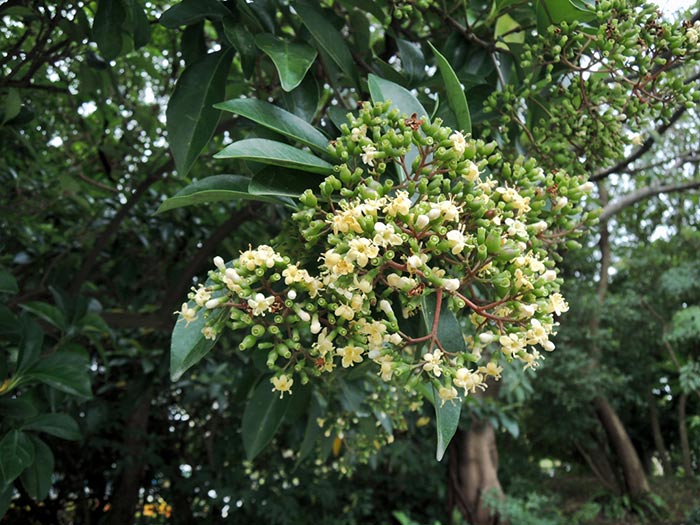Viburnum odoratissimum
The Chinese name of the sweet viburnum derives from its vibrant red fruits, which resemble coral when unripe. It is native to Taiwan and primarily grows in broadleaved forests at elevations of 300–1,500 meters in the southern to southeastern regions, thriving in the warm, humid subtropical climate. Its elegant form, lush foliage, and ornamental flowers and fruits make it a highly sought-after landscape plant.
The tree can grow up to several meters tall, with a rounded or oval crown and spreading branches, giving it an elegant and graceful overall appearance. The elliptical or obovate leaves are opposite, leathery, and glossy, remaining evergreen throughout the year, providing a steady source of greenery for gardens. In spring, the sweet viburnum blooms with small white flowers that are densely clustered and emit a faint fragrance, attracting insects for pollination. The most striking feature is the process of fruit maturation. Unripe fruits exhibit a vibrant red color resembling red coral, hanging in clusters on the branches with rich and eye-catching hues. As the fruits ripen, their color transitions from bright red to deep purple-black. The flowering and fruiting periods follow one another, allowing the sweet viburnum to showcase different charms in various seasons, offering long-lasting ornamental value. Not only is it visually appealing, but it is also drought-tolerant, adaptable to poor soil conditions, and possesses a certain resistance to air pollution in urban environments. As a result, it is commonly planted in parks, gardens, or along roadsides as a landscaping tree species. Due to its high moisture content, the plant is difficult to burn, making it an important fire-resistant tree. In Japan, it is widely used for disaster prevention landscaping around historical buildings, temples, and wooden structures.
It is distributed globally in Taiwan, China, India, and Mainland Southeast Asia. In our museum, it is planted in the Monsoon Rain Forest Area and the Orchid Island Area of the Botanical Garden. In the Monsoon Rain Forest Area it is planted along the central walkway and between the large lawn and the Tropical Rain Forest Greenhouse. During the fruiting season, it has an excellent landscape effect and also provides an important food source for birds in the garden.

